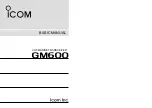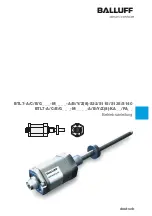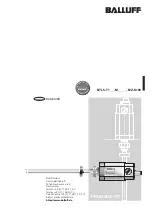
6. Remove hardware attaching cabinet to faceplate on left
and right sides of faceplate. Note position of all nuts,
flat washers, spring washers, etc., so they can be re-
installed in same locations.
7. Fully close HV and LV doors.
8. Slide cabinet assembly away from tank.
Cabinet installation
Reverse removal procedure to re-install cabinet. Re-attach
cabinet using shims under front of tank and wedges under
sides of cabinet, making sure cabinet gasket is inserted
into cabinet back channel prior to attaching cabinet. Tighten
cabinet hardware to 20 ft-lbs. torque.
Insulating liquid maintenance
Transformer tanks are factory-sealed to prevent ingress
of ambient air and moisture. Do not open under any
precipitation conditions.
If it is necessary to drain and refill the transformer, special
care should be taken to avoid the entrapment of gas
bubbles in the system. Gas bubbles have lower dielectric
integrity than the insulating liquid and will degrade the
performance characteristics of the insulating system.
Conventional oil-filled transformers
Refer to IEEE Std C57.106™-2006 standard, “Guide
For Acceptance and Maintenance of Insulating Oil in
Equipment”, for additional guidelines when testing and
handling conventional transformer oil. Periodic maintenance
tests should be performed.
R-Tran™ transformers
Eaton’s Cooper Power series R-Tran™ transformers are
filled with R-Temp fluid. R-Temp fluid is a non-toxic, readily
biodegradable, less-flammable (high fire point), high
molecular weight hydrocarbon dielectric fluid.
Refer to IEEE Std C57.121™-1998 standard, “Guide
for Acceptance and Maintenance of Less Flammable
Hydrocarbon Fluids in Transformers.” Periodic maintenance
tests should be performed on the same schedule as would
be used for transformers of similar application filled with
conventional transformer oil.
Contact your Eaton representative for additional handling
guidelines for R-Temp fluid.
Mixtures of R-Temp fluid and conventional
transformer oil
R-Temp fluid is fully miscible with conventional transformer
oil. There is no known detrimental performance impact
when R-Temp fluid is mixed with conventional transformer
oil. Conversely, except for some reduction in flash and
fire points, the same is true for conventional transformer
oil mixed with R-Temp fluid. Conventional transformer oil
content of >3% in R-Temp fluid lowers the fire point below
300 °C. Measure the ASTM flash and fire points if the
presence of conventional transformer oil is suspected. If
flash or fire points fall below the minimum values required,
retrofilling may be required.
Envirotran
®
transformers
Eaton’s Cooper Power series Envirotran
®
transformers are
filled with Envirotemp™ FR3™ fluid. Envirotemp™ FR3™
fluid is a less-flammable (high fire point) dielectric fluid
based on edible seed oils.
Periodic maintenance should be performed on the same
schedule as would be used for transformers of similar
application filled with conventional transformer oil. Basic
recommended tests for Envirotemp™ FR3™ fluid are
dielectric strength, moisture content, and flash and fire
points.
Envirotran transformer tanks are shipped from the factory
with a dry nitrogen-filled headspace. Internal pressure
should not be equalized with atmosphere by manually
opening the pressure relief valve device unless access
to Bay-O-Net fuses or other internal tank components is
required.
If internal service is required
If the tank cover or manhole/handhole must be removed
for internal service, exposure time to ambient air should
be minimized. Avoid exposure times greater than 24 hours.
Immediately after service is completed, replace the cover
or manhole/handhole. The tank headspace must then
be purged and recharged with dry nitrogen. Envirotran
transformers are equipped with one or two 1/4” fill valves
on the upper left and/or upper right corners of the face plate
and are intended for the recharging process. The following
steps should be followed when purging and recharging
Envirotran transformers:
1. Verify that tank is grounded. De-energize transformer
from a remote upstream source. Ground all bushings
and terminals.
2. Release internal pressure by operating pressure relief
device.
3. Fill headspace with dry nitrogen through one of the
1/4” fill valves to a pressure of 2-3 psig.
4. Release internal pressure by operating pressure relief
device.
5. Refill headspace with dry nitrogen through one of
the 1/4” fill valves to a pressure of 2-3 psig. Internal
pressure must be maintained for at least four hours
prior to transformer energization to verify seal integrity.
23
Three-phase pad-mounted compartmental type installation and maintenance instructions
MN202001EN August 2015





































